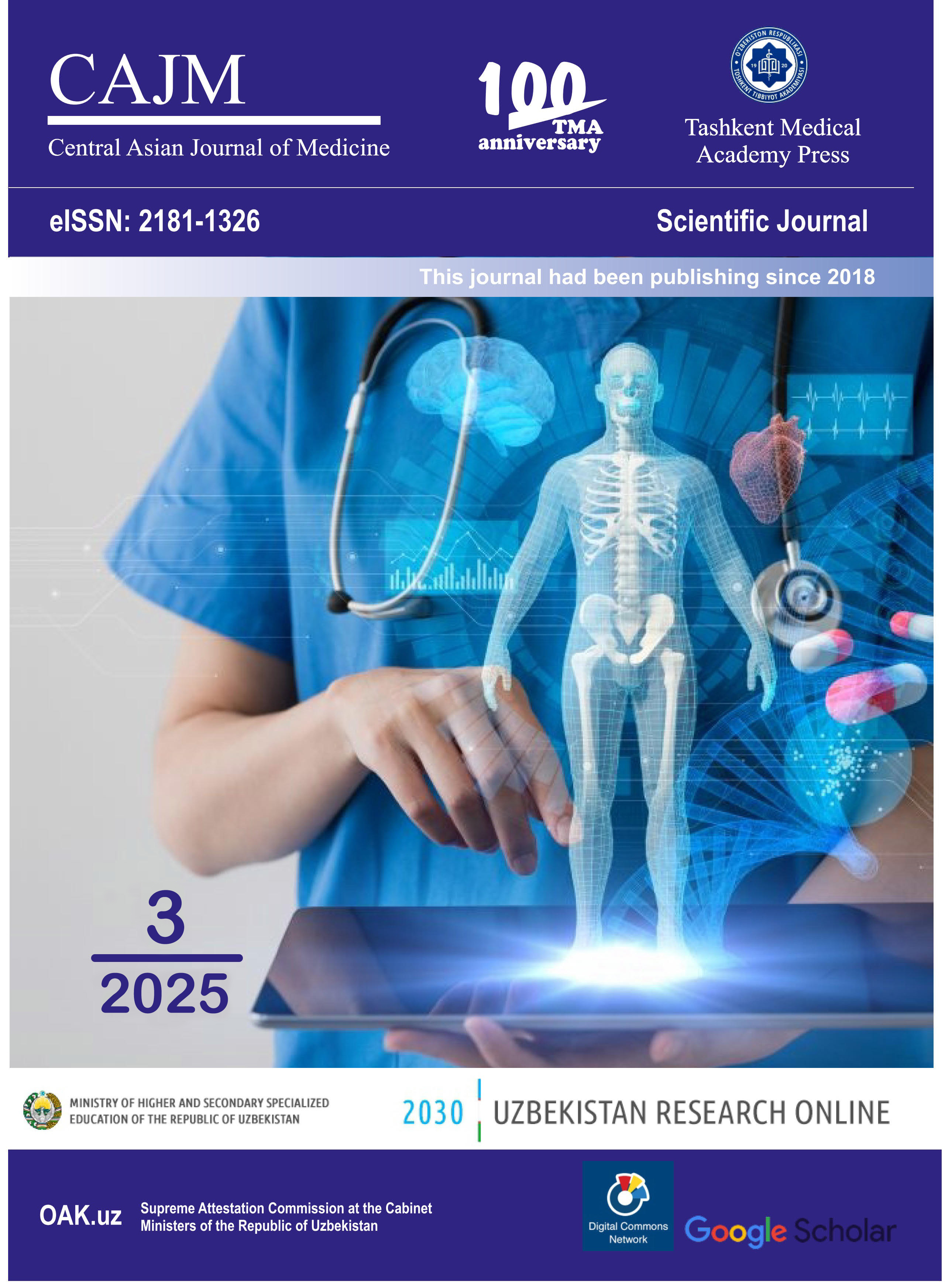OPTIMIZING POST-STROKE REHABILITATION: COMPARING THE EFFECTIVENESS OF PHARMACOPUNCTURE, KINESIOTHERAPY, KINESIOTAPING, REFLEXOTHERAPY, AND KORVIT DEVICE
Keywords:
stroke, rehabilitation, motor recovery, pharmacopuncture, kinesiotaping, kinesiotherapy, reflexotherapy, Korvit device.Abstract
Motor dysfunction after stroke remains one of the main challenges in the patient’s recovery process. Timely and well-structured rehabilitation can significantly improve movement, reduce complications, and restore independence. This study compares two modern rehabilitation approaches used in the early recovery phase of ischemic stroke. The first group of patients received a combination of pharmacopuncture, kinesiotherapy, and kinesiotaping. The second group was treated with reflexotherapy using the "Korvit" device. A third group received only standard rehabilitation methods. Clinical results were assessed using the Fugl-Meyer Scale, Barthel Index, and Modified Ashworth Scale. After a six-week course, the first group showed the most significant improvements in motor activity and reduction of spasticity. The second group also demonstrated better outcomes than the control group. These findings suggest that the use of combined and integrative rehabilitation techniques may increase the effectiveness of stroke recovery programs and help optimize treatment strategies in clinical practice.
References
Fugl-Meyer A.R. The post-stroke hemiplegic patient. Scandinavian Journal of Rehabilitation Medicine. 1975;7(1):13–31.
Gafurov A.I., Khamidova Sh.B. Rehabilitation Methods in the Post-Stroke Period. Tashkent: Ibn Sina, 2021. – 122 p.
Ibragimova Z.I., Turgunov A.B. Application of the "Korvit" Device in Reflexotherapy for Patients with Stroke Sequelae. Tashkent Medical Journal. 2020; 1:54–59.
Kim J., Lee B.H. Effects of Kinesiology Taping on Hemiplegic Shoulder Pain After Stroke. International Journal of Rehabilitation Research. 2016;39(2):152–158.
Kim O.A., Mavlyanova Z.F. Rehabilitation Potential as a Component of the Resocialization Process in Young People with Ischemic Stroke. Journal of Biomedicine and Practice. 2022;7(2):175–181.
Kurbonov B.B., Turaev Sh.T. Therapeutic Effectiveness of Kinesitherapy. Samarkand: SamDTU Publishing, 2020. – 98 p.
Langhorne P., Bernhardt J., Kwakkel G. Stroke Rehabilitation. The Lancet. 2011; 377(9778): 1693–1702.
Lee J.H. et al. Pharmacopuncture for Stroke Rehabilitation: A Systematic Review. European Journal of Integrative Medicine. 2013;5(3):e232–e240.
Lim E.C., Tay M.G.X. Kinesio Taping in Neuromuscular Rehabilitation. Physical Therapy Reviews. 2015;20(4):216–229.
Nikolaeva O.N., Sidorova A.V. Kinesio Taping in the Recovery of Motor Activity After Stroke. Bulletin of Restorative Medicine. 2019;3(31):45–50.
Umirova S.M., Bebitova Sh.E. Efficacy of Pharmacopuncture in the Treatment of Stroke Developing Against the Background of Anxiety-Depressive Syndrome. Journal of Neurology and Neurosurgical Research (JNNR). 2025; 2:15–18.
World Health Organization. Rehabilitation After Stroke. Geneva: WHO Press, 2021.

